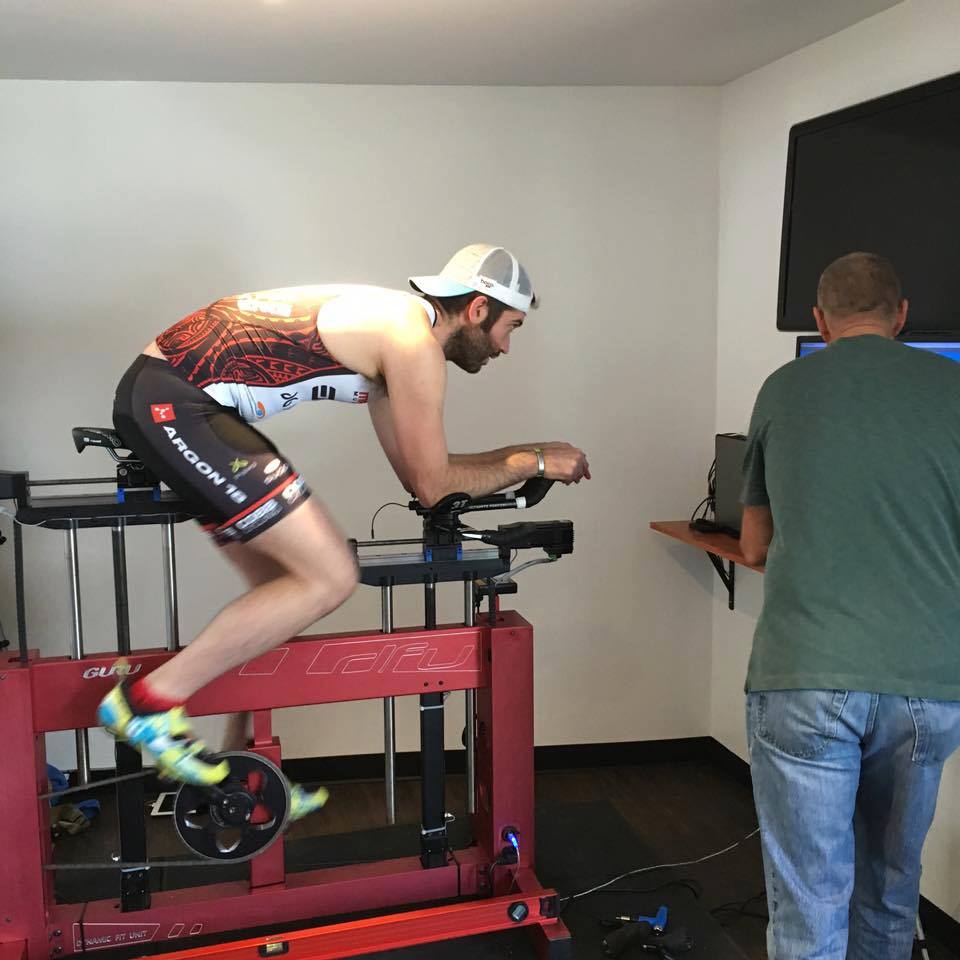Originally published at: A Case Study on the Importance of Saddles - Slowtwitch News
Patient: 38-year old male with significant pain in the right gluteal / hamstring area. Athlete reports that he was suffering from pain in the final week before IRONMAN Lake Placid, stopped training to rest, and then attempted the event. At mile 6 of the run, felt sharp increase in pain, decreased strength, and pulled off course three miles later.
If this story sounds familiar, hi, I’m the problem, it’s me. As noted in my article about this year’s IRONMAN Lake Placid, I managed to move my completion ratio for 140.6 distance events below the Mendoza line. One wrong step while running seemingly had blown the back half of my leg apart.
As it turns out, well, that wasn’t true. It had nothing to do with running at all. In fact, it had everything to do with cycling — and, really, just one very critical component of cycling. One that I, a fifteen year veteran of our sport, and nearly twenty years in the business of our sport, had completely overlooked.
It was my saddle.

You’re probably asking, “oh, come on Ryan. Just how bad of a problem can you create for yourself with the wrong saddle.” The answer is this wrong, from my MRI report: oblique linear low signal right inferior ramus compatible with nondisplaced fracture. Adjacent marrow edema superior rami fracture appreciated. Relatively localized high signal within the adductor minimus and ischiocavernosus muscles, adjacent to the fracture suggest contusion or strain.
For those who don’t speak radiology reports: I broke my pelvis in one place, I had a stress fracture in another place, and I had a lot of swelling / fluid in the hamstring and adductor, along with a strain of both muscles. Go big or go home.
And after talking with my orthopedic team, we narrowed down the source of the injury to one specific item. One that I consistently ignored some of the warning signs of. One that I just kept saying, “oh, it’s just part of riding. It’s never truly comfortable.” One that I rode for mile after uncomfortable mile, and figuring it was all down to the price we pay for biking 4-5 times a week for months on end.

Again: it was my saddle.
Hindsight being 20/20, I’d say I first started noticing that the saddle was really uncomfortable at what turned into my fracture site around February — five months before the race. As I wrote in some of my articles leading up to IRONMAN Lake Placid this year, almost all of my bike training occurred indoors, with my trainer bike and Wahoo KICKR. As rides got longer, my discomfort increased; I tried different shorts and new chamois cream, but never touched the saddle (a Bontrager road one that came stock on the trainer bike).
There is a reason why a friend of mine calls me “dazzlingly incompetent.”
We don’t think of bike saddles as something that can go disastrously wrong. But, as a reminder: your saddle is really only one of three places where your body comes in contact with a bike. And if any one of those is wrong, the rest of your bike fit is a series of compromises. As it turns out, an improper bike saddle can go severely wrong; that pressure onto the pubic rami wound up putting a stress fracture into both ends of the bone. Then me attempting to run on it pulled the inferior part of it apart into a full-blown fracture — that’s when it felt like someone had shot me in the back of the leg.
Let’s not forget: I work in the industry. I have countless good saddles at my disposal, from the ISM PS 2.0 that was on my triathlon bike (and gave me zero problems during the 112 miles at Lake Placid) to the Fizik Argo on my gravel bike or literally anything else (like the excellent WOVE saddle pictured below). But it points to a much larger trend that we’ve been alluding to over the past two years looking at the World Championships bike count: we seem to have lost the plot on bike fit and technology.

Look through the bike racks of your next triathlon and you will see plenty of newer bikes with what can only be described as compromised set-ups. Whether that’s interesting stem or bar choices, or saddles pointed toward the ground, or athletes still not utilizing their aerobars, it all comes back to fit not being placed at the front end of the decision-making process. Fit has to come back to the forefront — the thing you do before you even consider what bike you might be purchasing.
Or don’t. And perhaps you too can join me on the sidelines, cursing yourself for not being smart enough to just change your saddle.
Photos: Rob Piperno / Kelly Burns Gallagher / WOVE Bike


